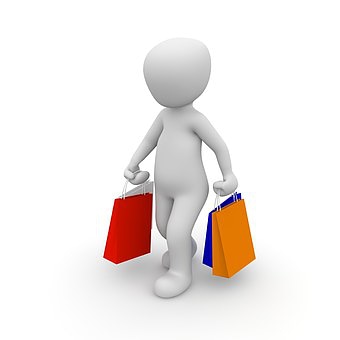Mastering Korean Shopping: Language Barrier Solutions
- Allthatsales

- 2 days ago
- 4 min read
Shopping in Korea can be an exciting and rewarding experience. From trendy fashion to unique local products, the options are endless. However, one common challenge many face is the language barrier. Navigating stores, understanding product details, and communicating with sellers can be tricky without Korean language skills. This guide will provide practical shopping tips for Korea and effective ways to overcome language obstacles, ensuring your shopping adventures are smooth and enjoyable.
Shopping Tips for Korea: What You Need to Know
When shopping in Korea, preparation is key. Here are some essential tips to help you get started:
Research Popular Shopping Areas: Seoul’s Myeongdong, Dongdaemun, and Hongdae districts are famous for fashion and cosmetics. Busan’s Gukje Market offers traditional goods and street food.
Understand Payment Methods: Credit cards are widely accepted, but some small shops prefer cash. It’s good to carry some Korean won for convenience.
Look for Tax Refunds: Tourists can claim tax refunds on purchases over a certain amount. Keep your receipts and ask the store about the process.
Check Store Hours: Most shops open around 10 AM and close by 10 PM. Some markets may close earlier on weekends or holidays.
Try Bargaining in Markets: In traditional markets, bargaining is common and expected. Be polite and friendly when negotiating prices.
These tips will help you feel more confident and prepared before you start shopping.

How Can Language Barriers Be Overcome?
Language barriers can make shopping in Korea intimidating, but there are several effective strategies to help you communicate and understand better:
Use Translation Apps
Apps like Google Translate or Papago can instantly translate text and speech. You can scan product labels or menus and even have live conversations with store staff.
Learn Basic Korean Phrases
Simple phrases like “How much is this?” (이거 얼마에요?), “Do you have this in a different size?” (다른 사이즈 있어요?), and “Thank you” (감사합니다) can go a long way.
Bring a Phrasebook or Cheat Sheet
Having a small booklet or printed sheet with common shopping phrases and questions can be handy when your phone battery dies or internet is unavailable.
Use Visual Aids
Pointing to items, showing pictures, or using gestures can help convey your needs without words.
Shop at Tourist-Friendly Stores
Many stores in popular shopping districts have English-speaking staff or English menus. These places are more accommodating to international shoppers.
Leverage Online Shopping Platforms
If in-person communication is too challenging, consider using Korean online marketplaces that offer international shipping and English interfaces.
By combining these methods, you can significantly reduce misunderstandings and enjoy a more seamless shopping experience.

Navigating Korean Markets and Department Stores
Korean markets and department stores offer very different shopping experiences. Understanding their unique features will help you shop more effectively.
Traditional Markets
These markets are vibrant and full of local flavor. You can find fresh produce, street food, clothing, and souvenirs. Prices are often negotiable, and the atmosphere is lively. However, English is rarely spoken, so prepare to use non-verbal communication or translation tools.
Department Stores
Large department stores like Lotte, Shinsegae, and Hyundai offer a more polished shopping environment. They carry international brands, luxury goods, and Korean products. Staff usually have some English skills, and signage is often bilingual. Prices are fixed, but you can find seasonal sales and promotions.
Convenience Stores
These are everywhere in Korea and great for quick purchases like snacks, drinks, and toiletries. Staff may not speak English, but products are usually labeled in English or have pictures.
When shopping in these places, keep your shopping goals in mind and choose the environment that suits your style and comfort level.

Tips for Using Language Barrier Solutions When Shopping
One of the best ways to overcome communication challenges is by using specialized language barrier solutions. For example, the platform linked here offers tools and services designed to help international shoppers order from Korean marketplaces without language difficulties.
Global Order Services
These services act as intermediaries, translating product descriptions, handling payments, and shipping items internationally. This eliminates the need to communicate directly with Korean sellers.
Multilingual Customer Support
Many platforms provide support in English and other languages, making it easier to resolve issues or ask questions.
User-Friendly Interfaces
Websites and apps designed for global users often have clear navigation, filters, and search functions in multiple languages.
Secure Payment Options
These platforms accept international credit cards and offer buyer protection, giving you peace of mind.
Using such solutions can save time, reduce frustration, and expand your access to Korean products beyond what you can find locally.
Making the Most of Your Korean Shopping Experience
To truly master shopping in Korea, consider these additional tips:
Plan Your Shopping Trips
Map out the stores or markets you want to visit. Group nearby locations to save time and transportation costs.
Bring a Portable Charger
You’ll likely rely on your phone for translation apps, maps, and payment. Keep it charged to avoid interruptions.
Stay Patient and Polite
Language barriers can cause misunderstandings. Smile, stay calm, and be respectful to make interactions pleasant.
Try Local Products
Don’t just stick to international brands. Korean skincare, fashion, and snacks are popular worldwide for a reason.
Keep Receipts and Warranty Information
For electronics or expensive items, ensure you have proper documentation in case you need after-sales service.
By following these guidelines, you’ll not only shop smarter but also enjoy the cultural richness of Korea’s retail scene.
Shopping in Korea is an adventure that combines discovery, culture, and fun. With the right preparation and tools, you can overcome language challenges and make the most of your shopping journey.



